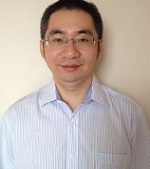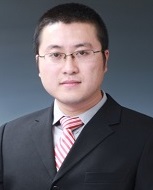| 题目:Low Cost Massive MIMO:From Theory to Practice 时间:2016年1月18日上午 9:30-10:30 地点:玉泉校区信电楼117会议室 报告人:金石,东南大学教授 |  |
报告摘要(Abstract):
大规模MIMO无线通信能够深度挖掘空间维度无线资源,大幅提升无线通信频谱效率和功率效率,是支撑5G移动通信最具潜力的研究方向之一。理论上大规模MIMO系统发现在基站天线数趋近于无穷时,严重影响通信系统性能的热噪声和不相干的小区间干扰将可以被忽略不计,而且最简单的波束成型将会变成最优。然而,面向实际应用的大规模MIMO系统在实现过程中遇到关键性挑战,包括高精度ADC成本昂贵、射频通道的功率和开销大、以及基带信号处理复杂度极高等,研究低成本高效多天线无线传输非常有必要。该报告从现代信号处理的角度入手,基于统一框架详细介绍了模数混合预编码、低精度ADC接收机、混合式ADC架构、以及量化OFDM等关键技术,为实现面向未来移动通信的低成本高效多天线无线传输奠定基础。
报告人简介(Biography):
金石:东南大学教授,国家自然科学基金优秀青年基金和江苏省杰青获得者。2007年获得东南大学通信与信息系统专业博士学位,同年起在东南大学移动通信国家重点实验室工作,2007年4月至2009年10月赴英国伦敦大学学院电气与电子工程系进行博士后研究。目前主要研究方向为移动通信理论与关键技术、空时无线通信、现代信号处理及其在移动通信中应用。已在无线通信领域发表论文200余篇,其中IEEE Trans. IT/SP/COMM/JSAC/JSTSP/WC/VT等权威杂志80余篇,主要IEEE 国际学术会议论文120余篇。担任IEEE Trans. on Wireless Communications、IEEE Communications Letters、IET-Communications编委,China Communications编委,以及IEEE信号处理学会通信技术委员会(SPCOM)委员,入选爱思唯尔2014年中国高被引学者。研究成果获江苏省科学技术奖一等奖、教育部自然科学奖二等奖、2011年度国际电气与电子工程师协会通信学会(IEEE Communications Society)莱斯论文奖、2010年度国际电气与电子工程师协会信号处理学会青年最佳论文奖(2010 IEEE Signal Processing Society Young Author Best Paper Award)、以及2009年度全国优秀博士学位论文提名奖等。
| 题目:A DFT aided Low-Cost Channel Estimation Scheme for TDD/FDD Massive MIMO Systems 时间:2016年1月18日上午 10:30-11:30 地点:玉泉校区信电楼117会议室 报告人:高飞飞,清华大学副教授 |  |
报告摘要(Abstract):
We present a new transmission strategy for the multiuser massive MIMO systems, including uplink/downlink channel estimation and user scheduling for data transmission. This scheme exploits the array structure as well as the spatial information of the incoming signal at BS, and generates an alternative low rank signaling model, named as spatial basis expansion model (SBEM). The basis vectors of SBEM are formulated from discrete Fourier Transform (DFT) vectors and can be efficiently deployed by the fast Fourier transform (FFT). With SBEM, both uplink and downlink channel estimation of multiusers can be carried out with very few amount of training resources, which significantly reduces the training overhead and the feedback cost for the downlink training. Moreover, the channel estimation of different users could be spatially separated from orthogonal beams, which immediately relieve the pilot contamination problem. Compared to the existing low rank modeling, the newly proposed SBEM does not require knowledge of massive channel statistics and does not suffer from high complex eigenvalue decomposition of the massive covariance matrices. Another key benefit of SBEM is that due to reciprocity of electromagnetic waves, the beam directions are also reciprocal for uplink and downlink transmission. Hence, SBEM is not only applicable for TDD system but may also present a low complexity solution for the FDD systems. Lastly, some efficient user scheduling algorithms for data transmissions are designed based on different optimization criterions.
报告人简介(Biography):
Feifei Gao received the Ph.D. degree from National University of Singapore in 2007. He was a Research Fellow with the Institute for Infocomm Research (I2R), A*STAR, in 2008 and an Assistant Professor with the School of Engineering and Science, Jacobs University, Germany from 2009 to 2010. In 2011, he joined the Department of Automation, Tsinghua University, Beijing, China, where he is currently an Associate Professor. Prof. Gao's research areas include communication theory, signal processing for communications, array signal processing, and convex optimizations. He has authored/ coauthored more than 70 refereed IEEE journal papers, with 3500 plus citations from Google Scholar. Prof. Gao has served as an Editor of IEEE Trans. on Wireless Commun., IEEE Wireless Commun. Lett., International Journal on Antennas and Propagations, and China Commun. He has also served as the symposium co-chair for 2015 IEEE ICC, 2014 IEEE GLOBECOM, 2014 IEEE VTC.







 您的位置 :
您的位置 : 